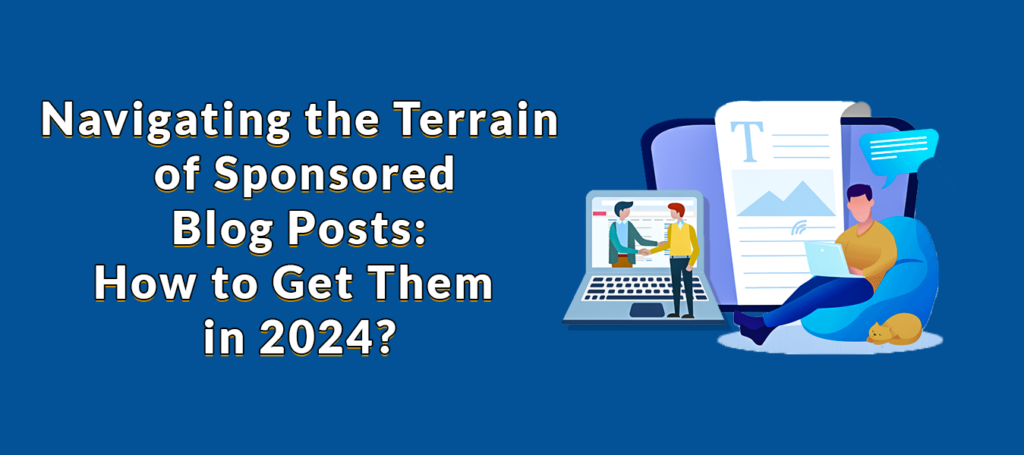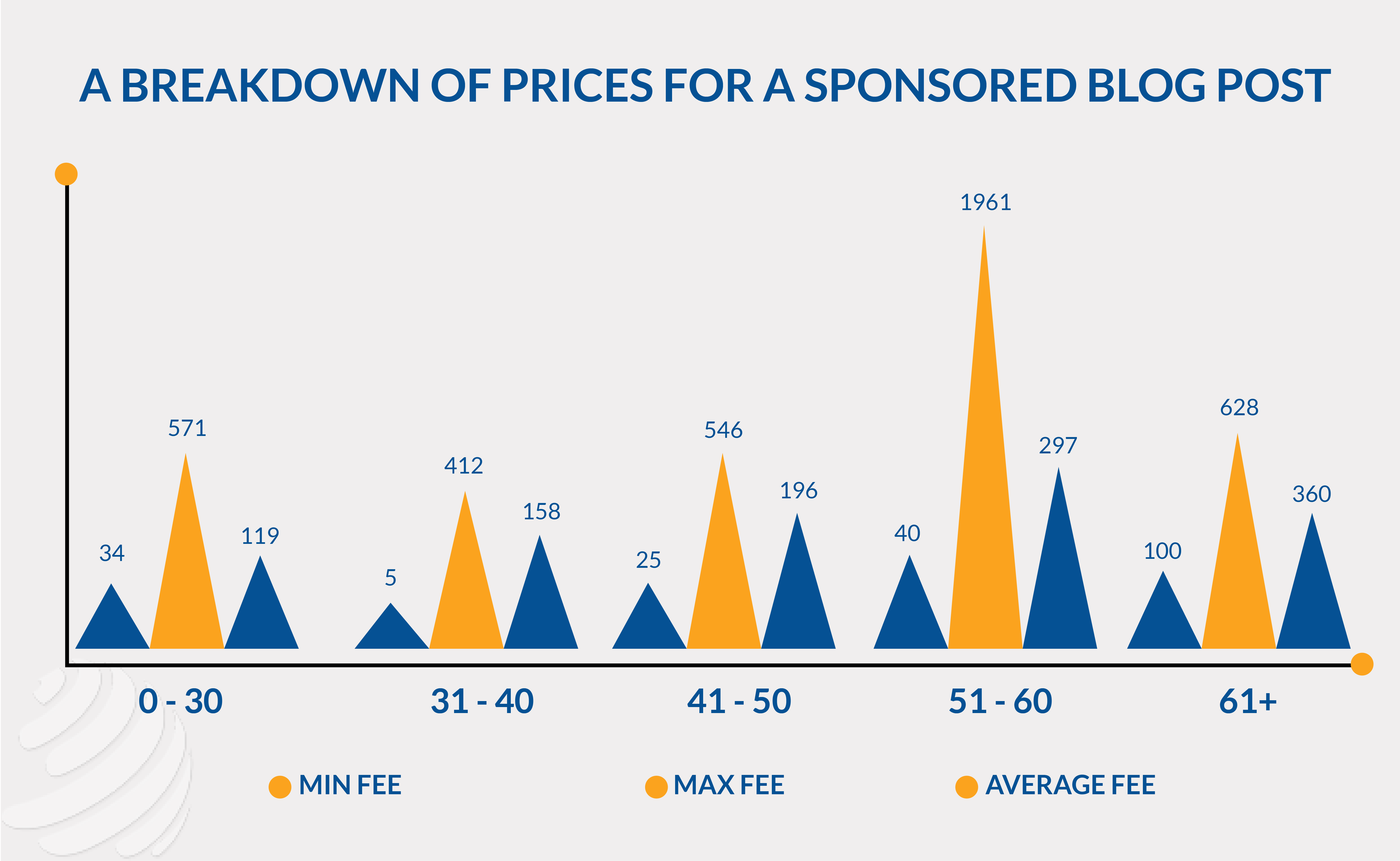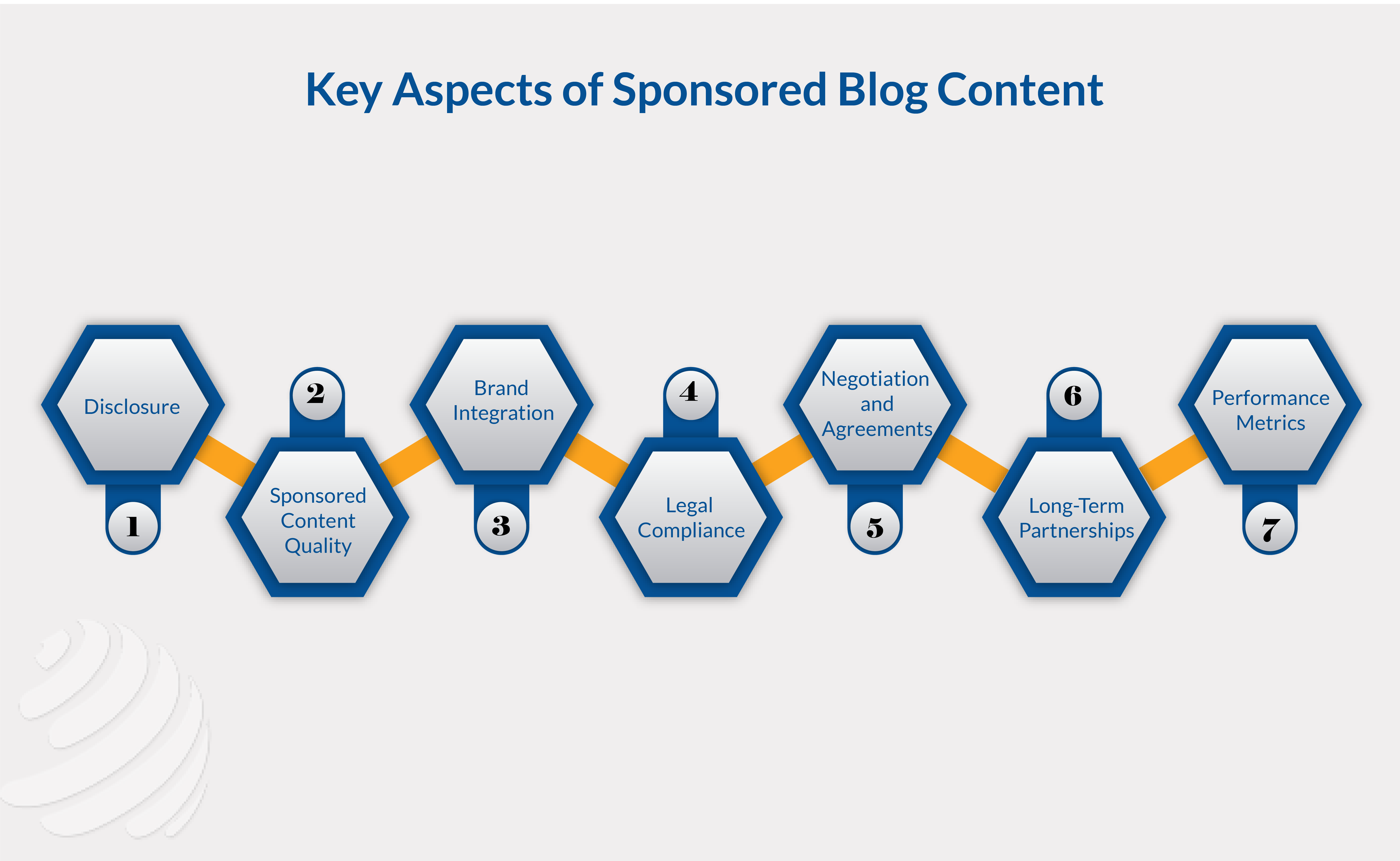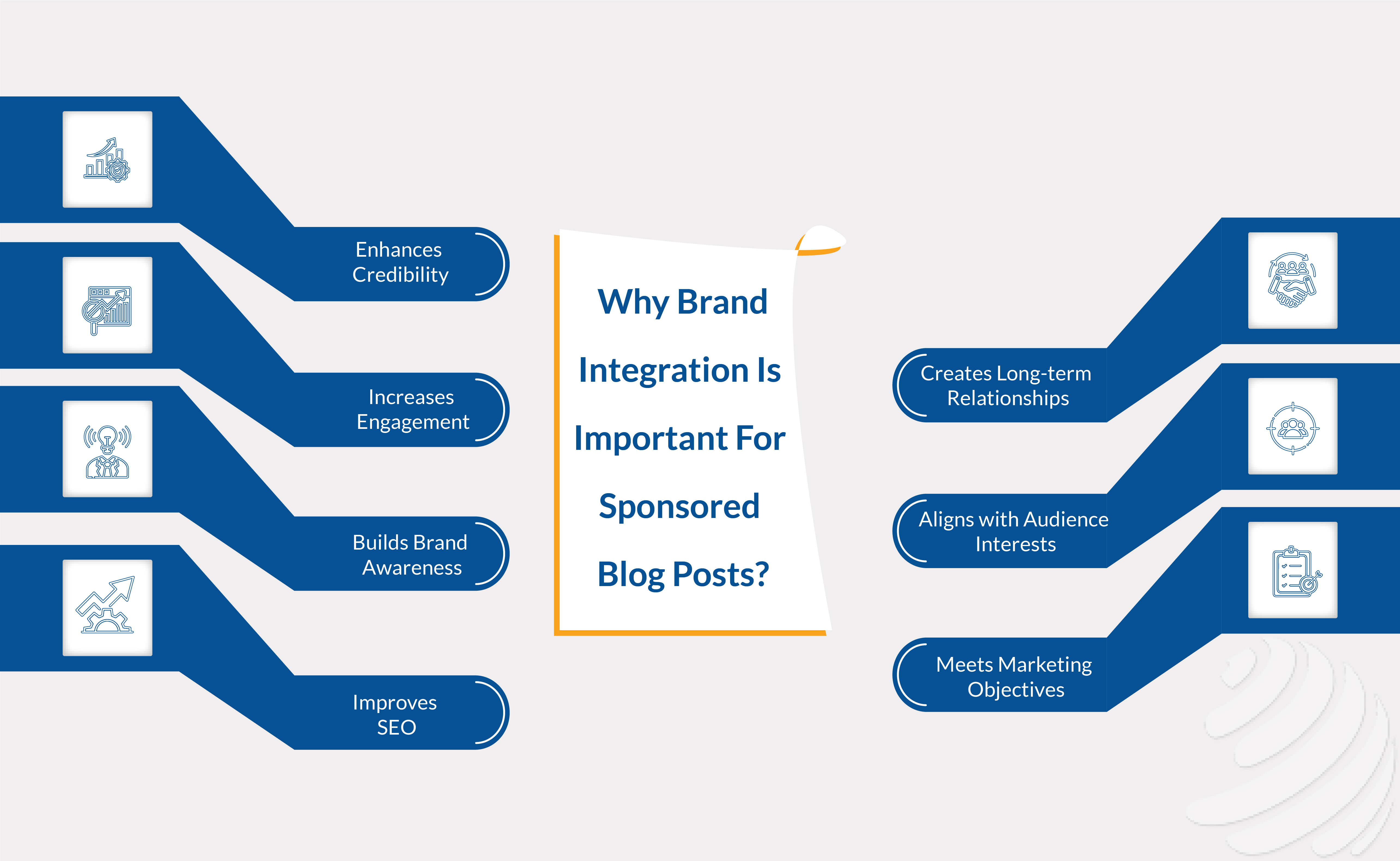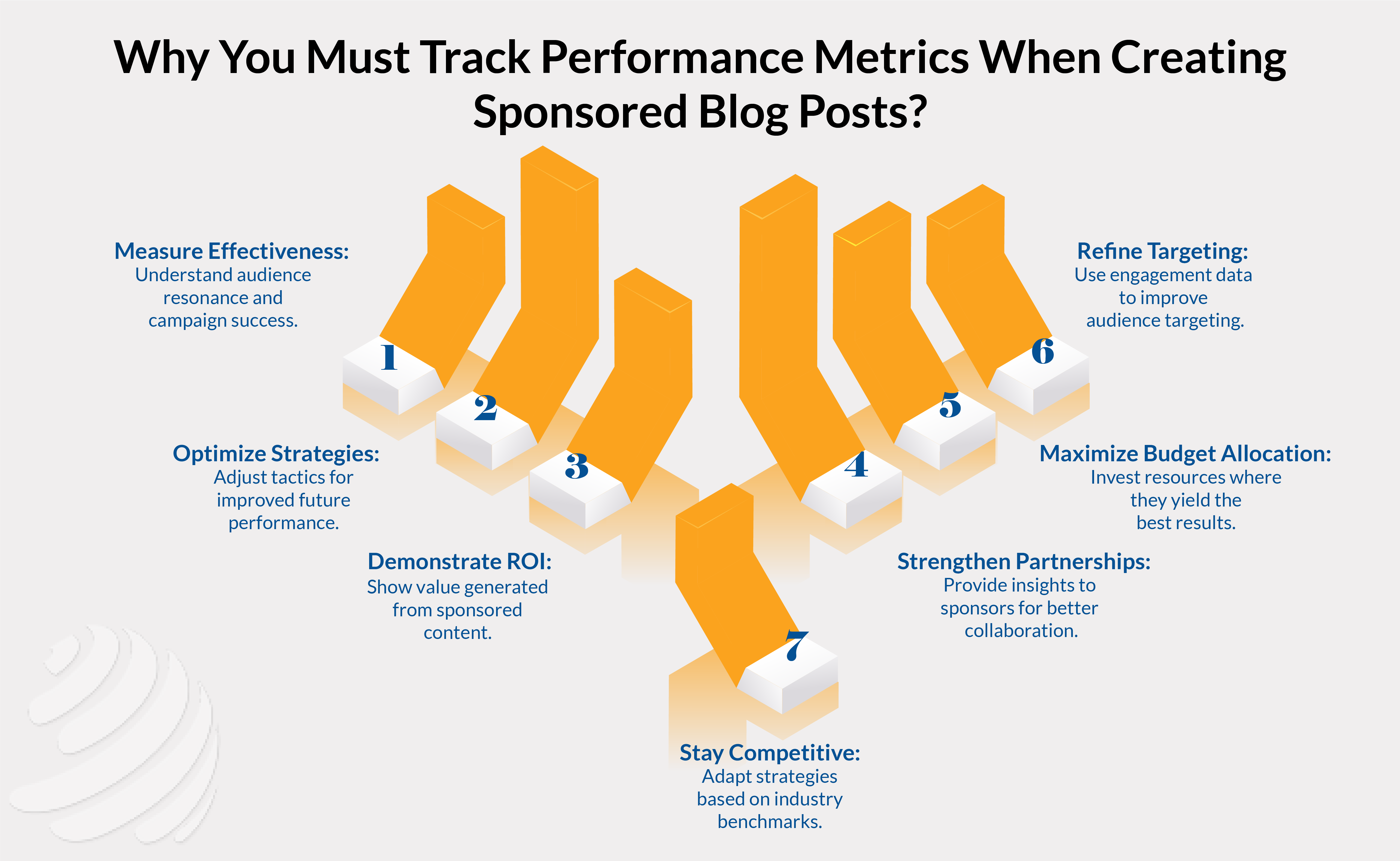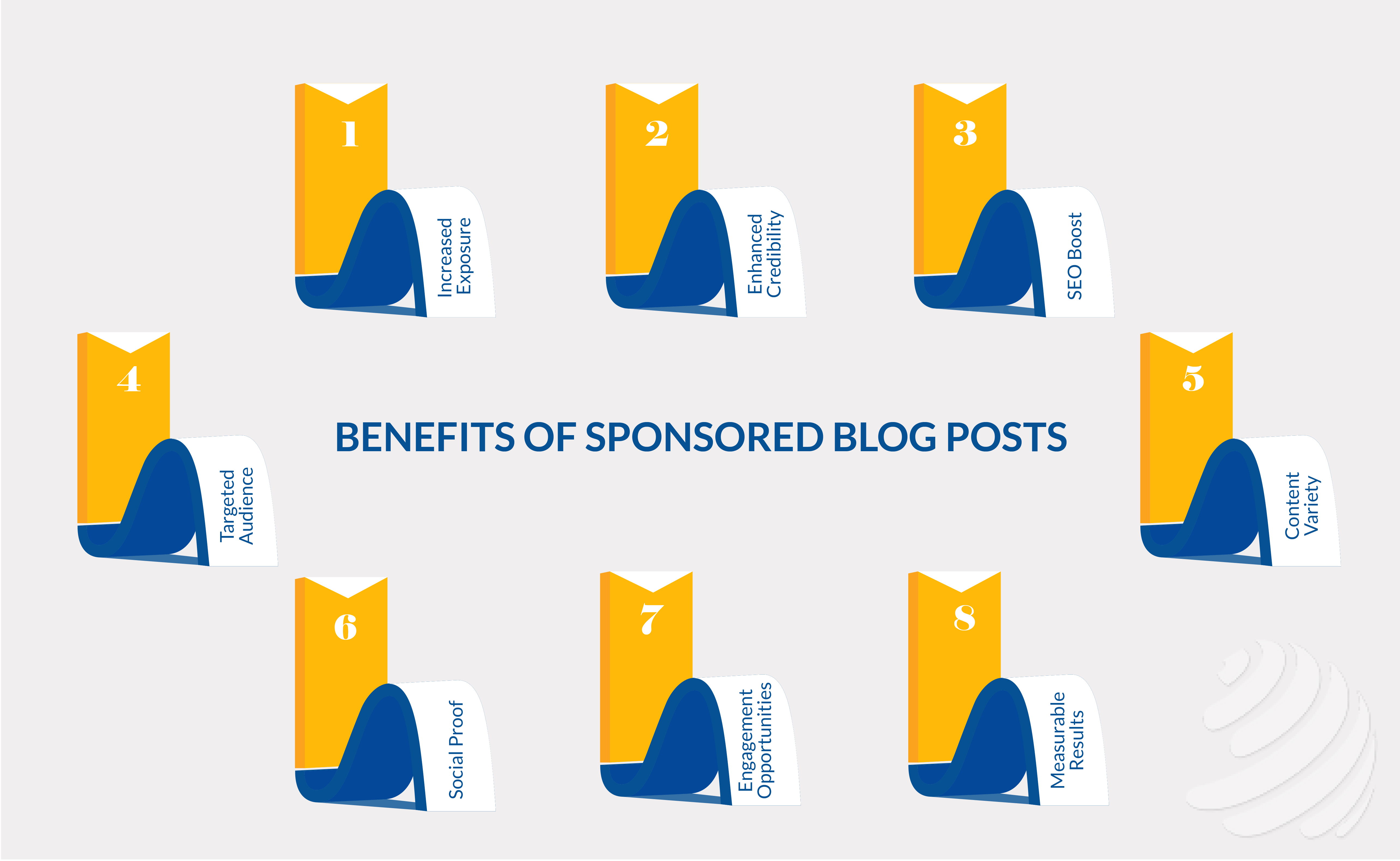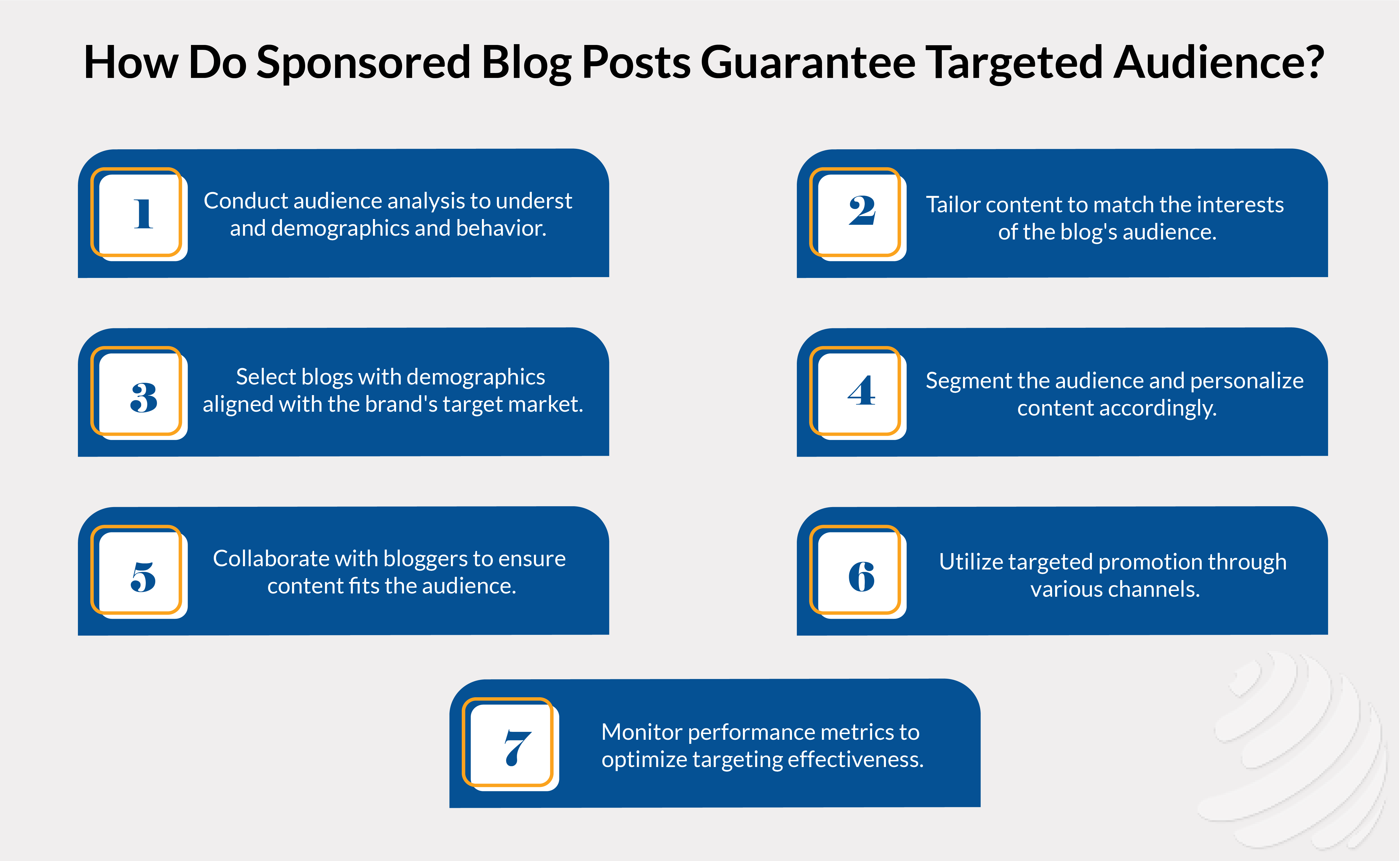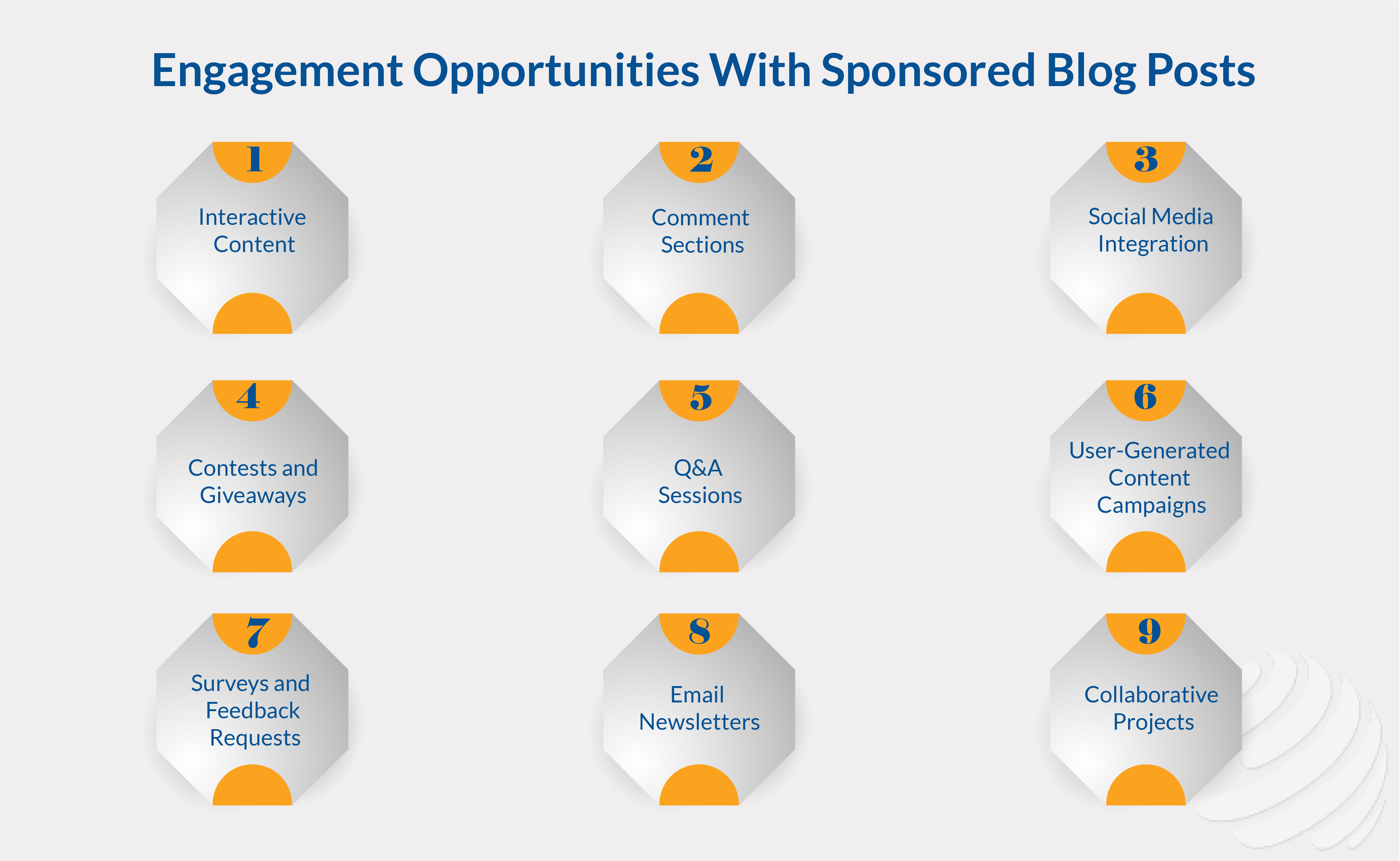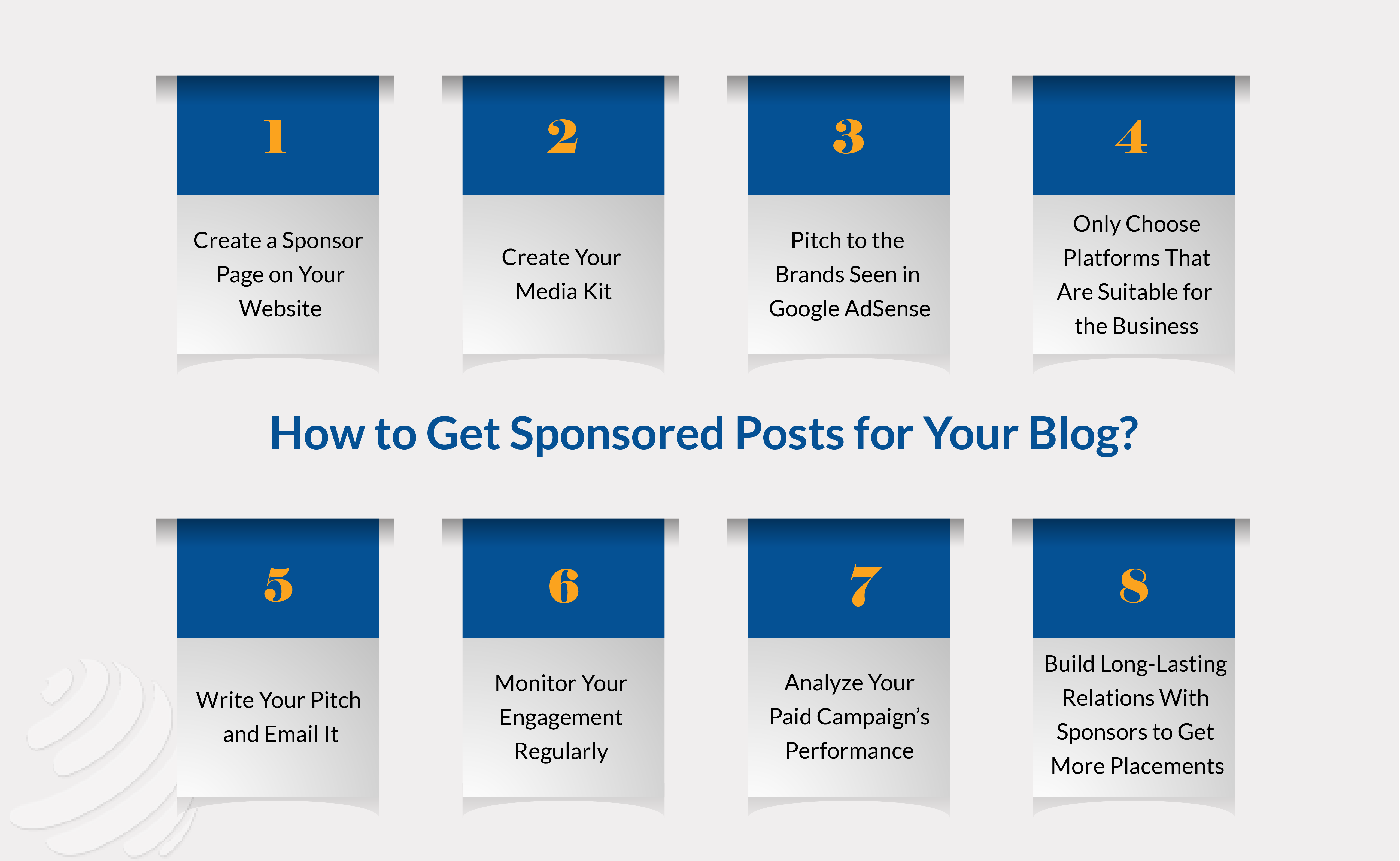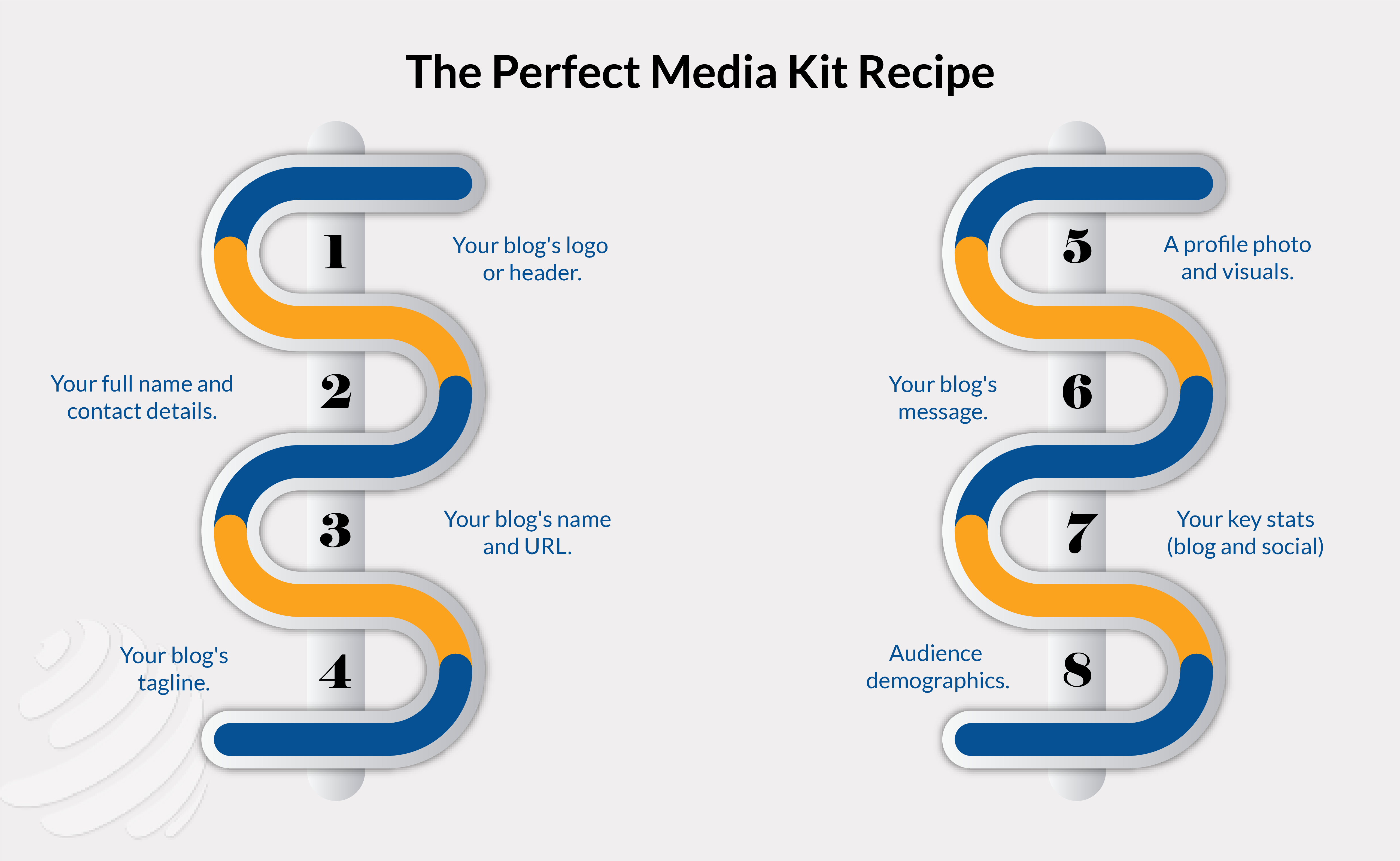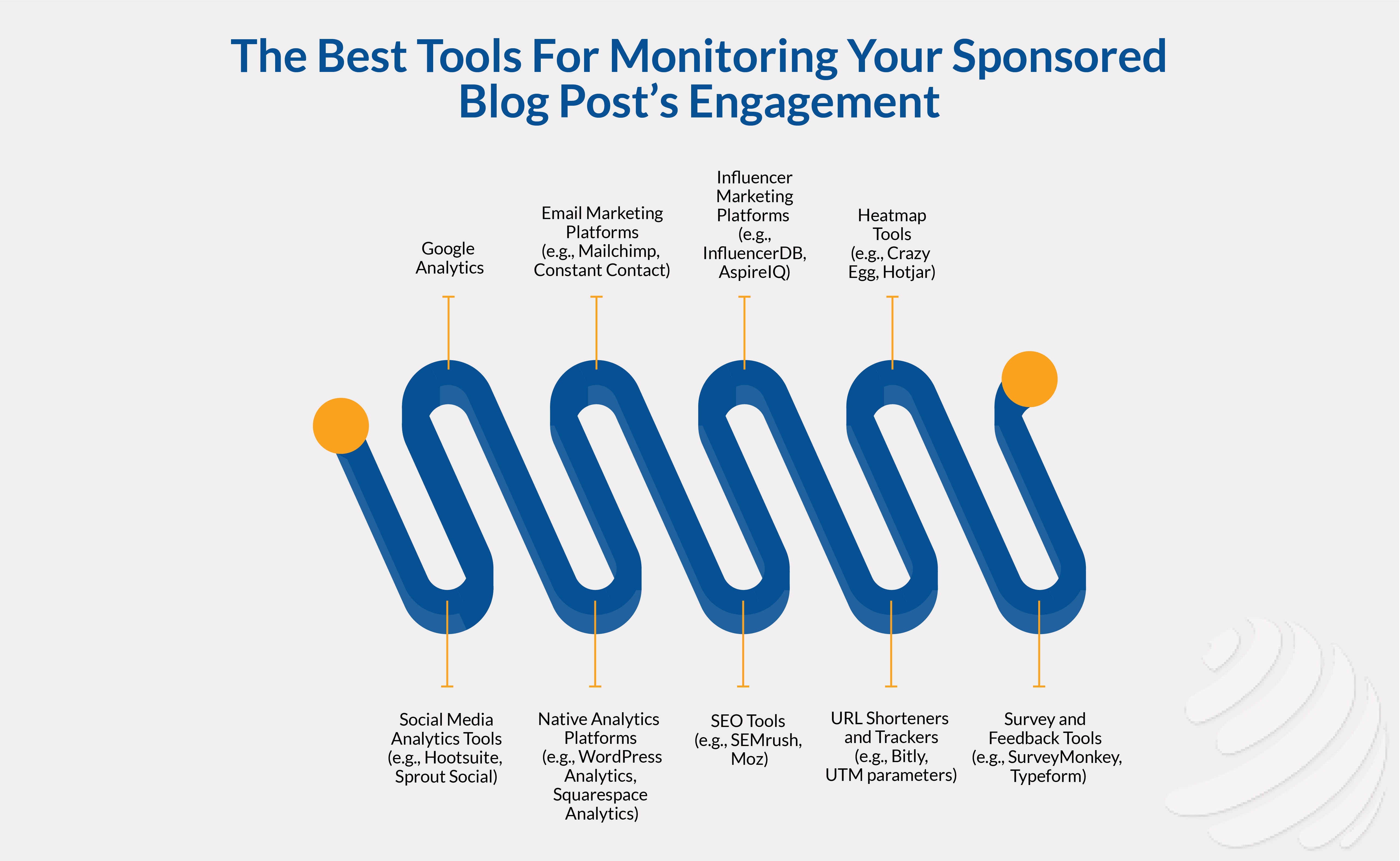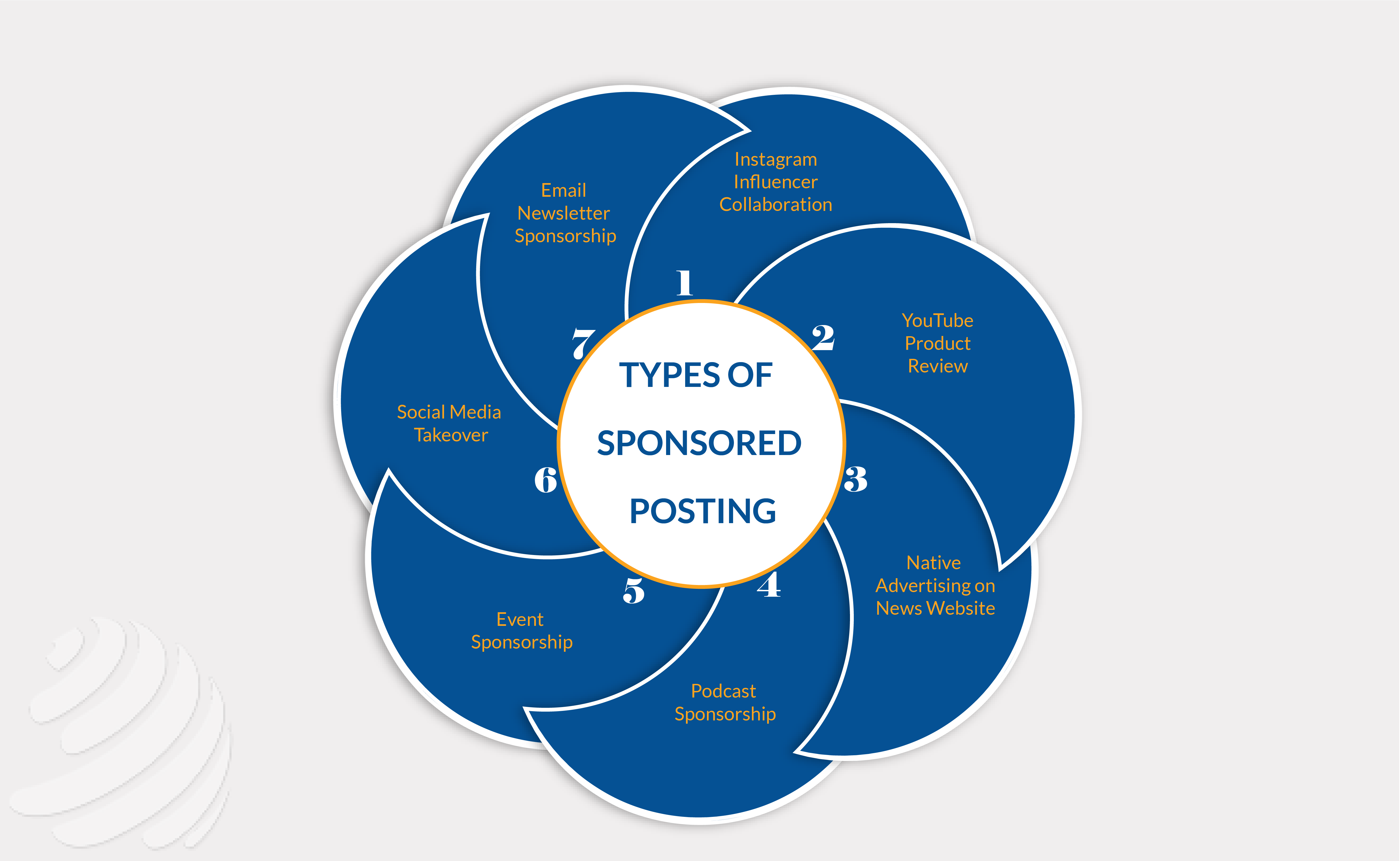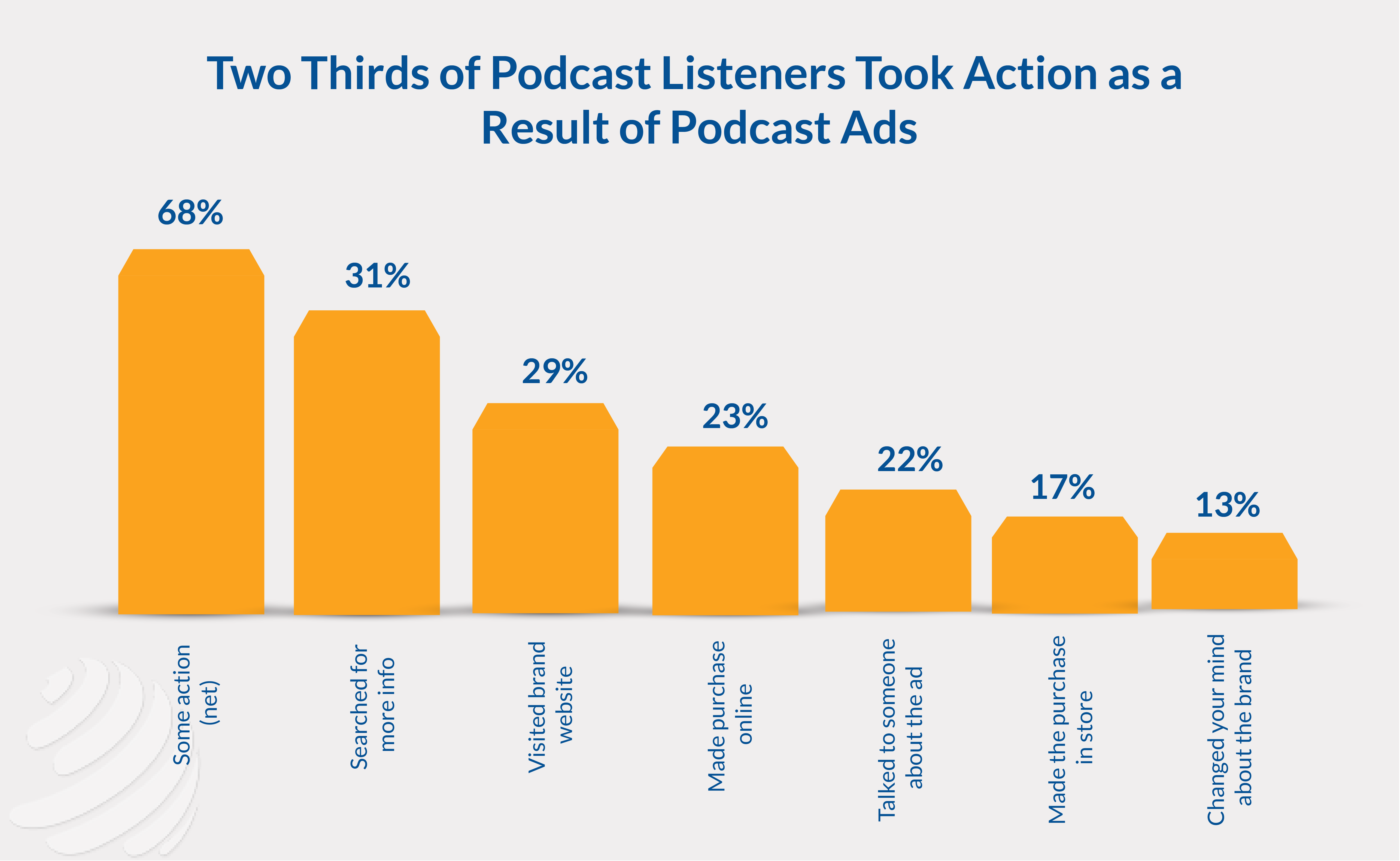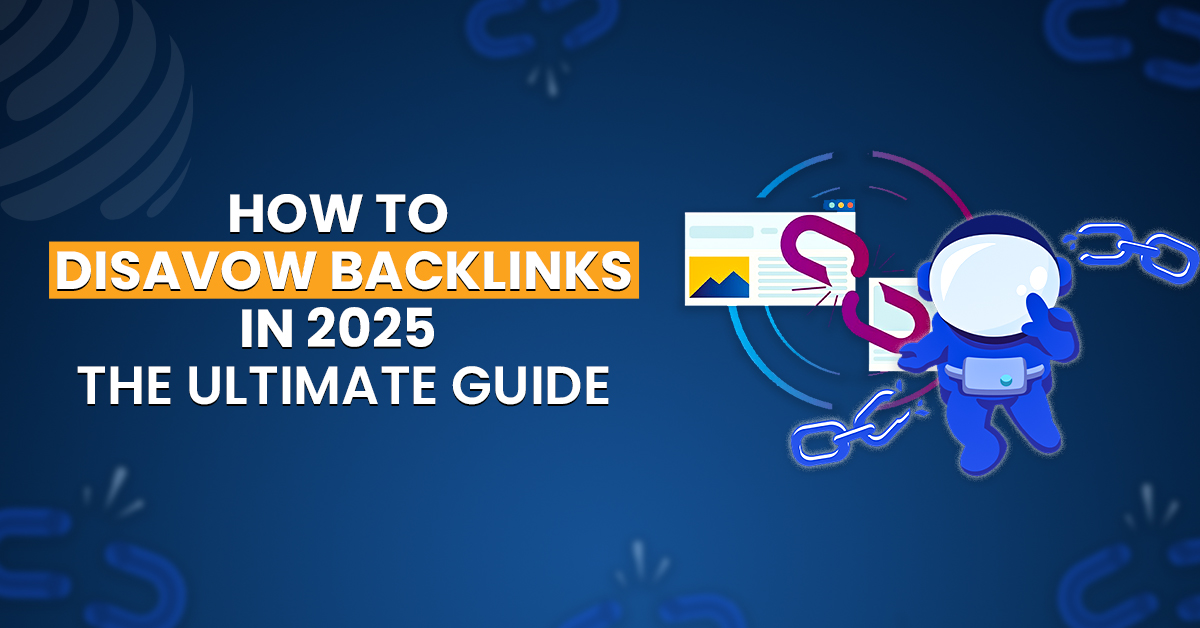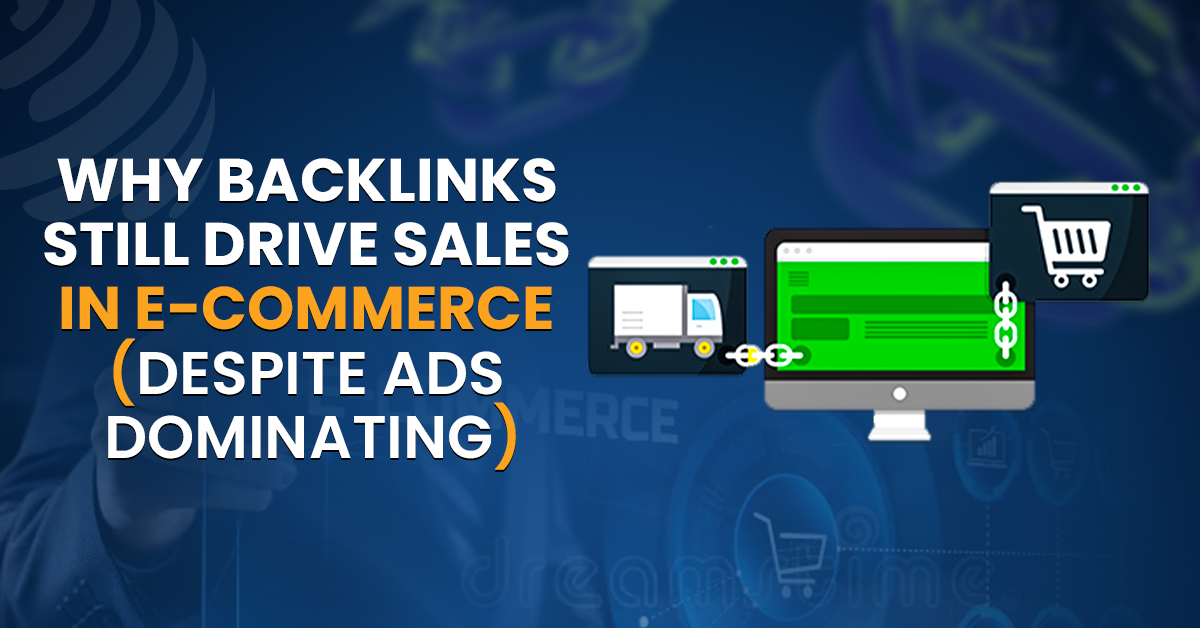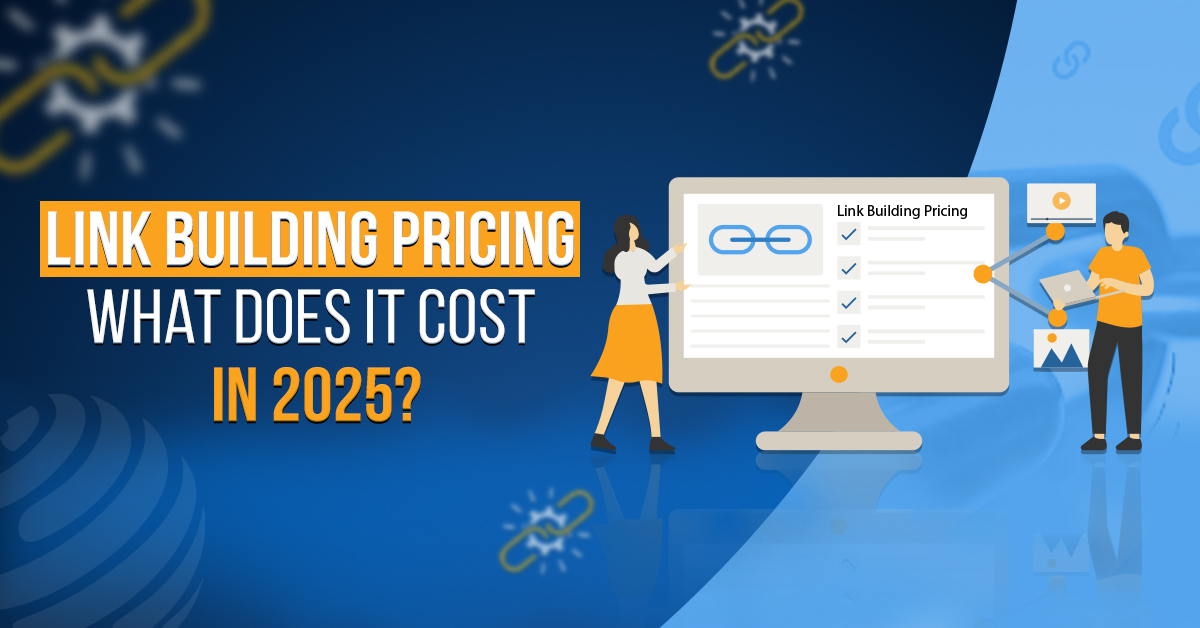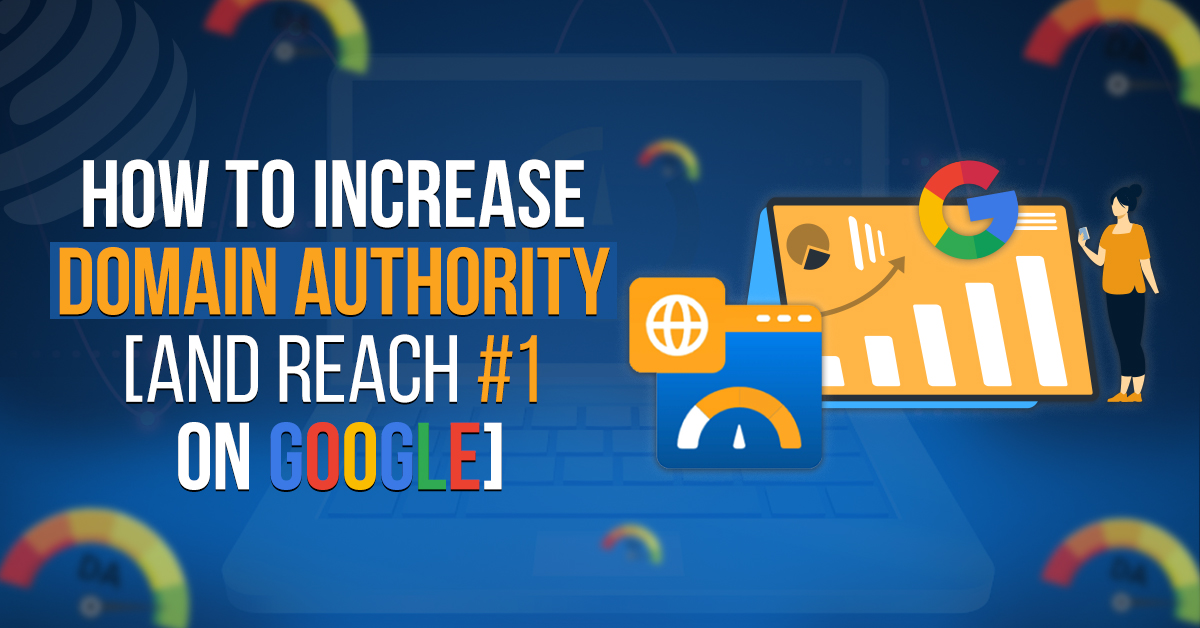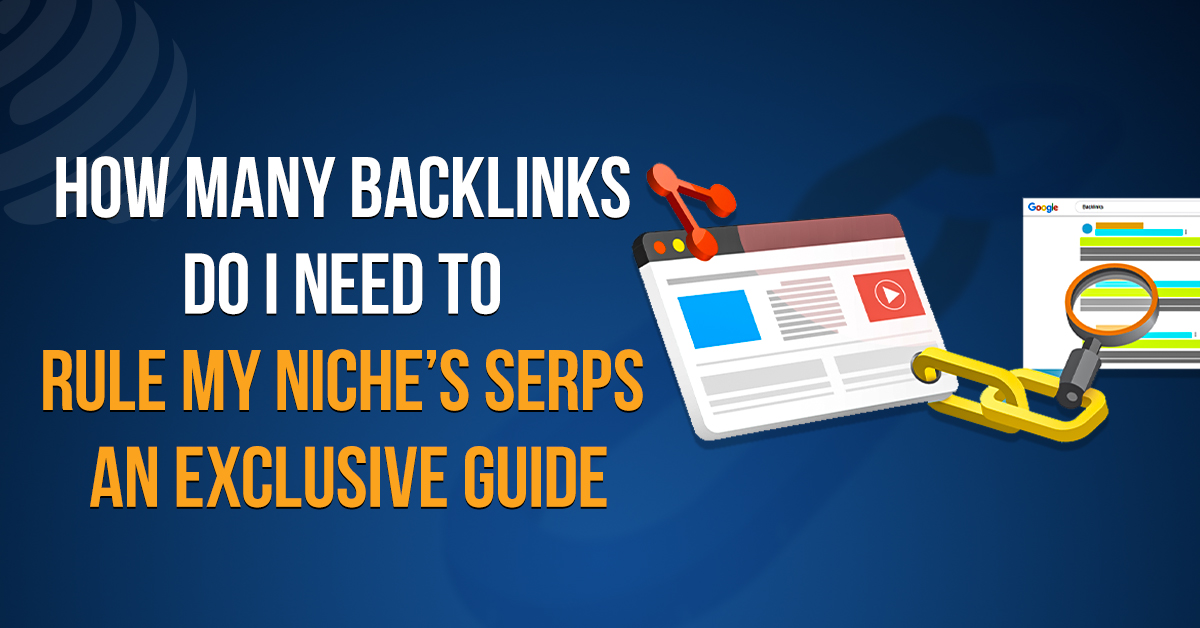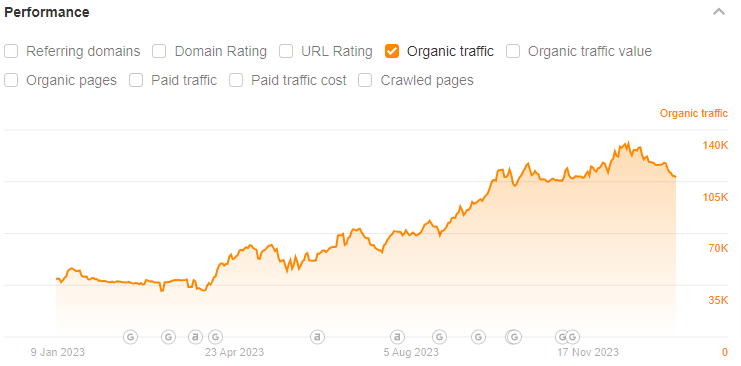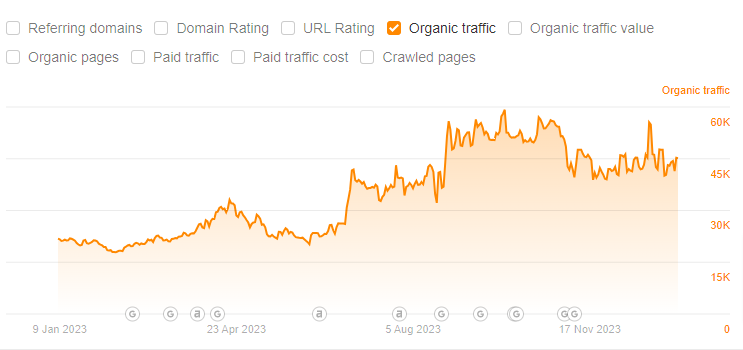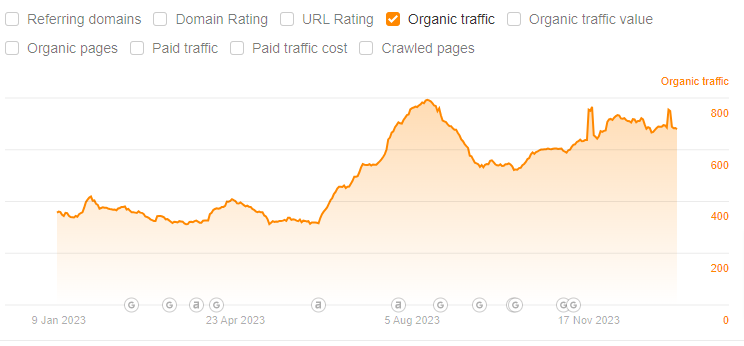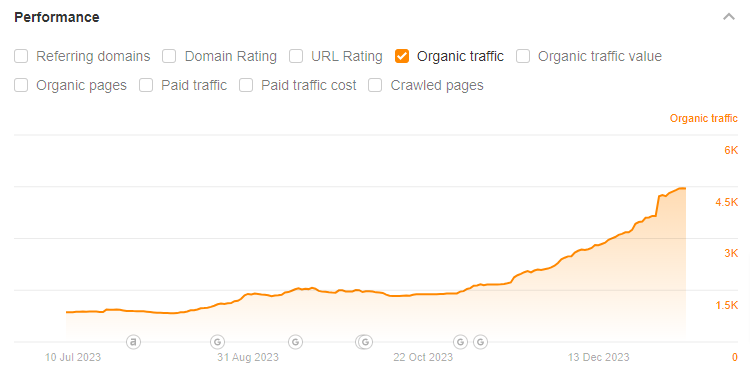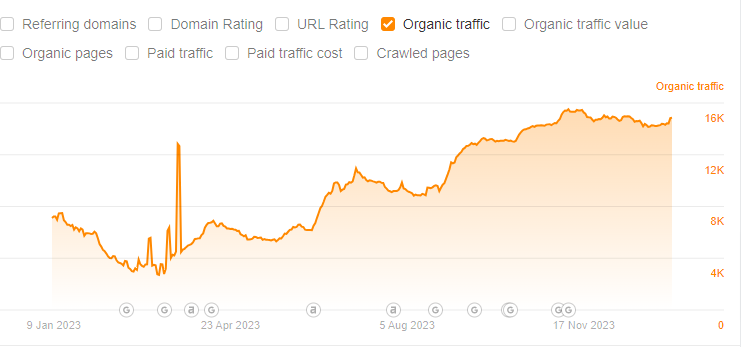Sponsored blog posts are the perfect way of earning money for your blog. Finding sponsors that are eager to work with your website and the platform it offers is usually possible, even if your niche is narrow.
However, it might be challenging to know where to hunt for such sponsors.
While we know that it is super to look for sponsored posts for blogs, we have some steps that you can follow to acquire sponsored blog posts.
Let’s discuss how to find sponsored blog content, uncover possible sponsors who can complement your content, create a compelling pitch, and establish connections with sponsored blog posts networks.
We have covered everything you need to know about earning money through sponsored blog posts, including how to get sponsored posts for your blog as well as how to approach a sponsorship blogger in the most effective way.
What Are Sponsored Blog Posts?
Sponsored blog posts are articles or content pieces created by bloggers or content creators in collaboration with a brand or company.
These posts are paid for by the brand or company to promote their products, services, or messages. The content of sponsored blog posts can vary widely depending on the agreement between the blogger and the sponsoring entity. They might include product reviews, tutorials, listicles, or other types of content designed to engage the blogger’s audience while also promoting the sponsor’s offerings.
Key Aspects of Sponsored Blog Content
Sponsored blog posts often serve as a form of native advertising, seamlessly integrated into the blogger’s platform while aligning with the interests of their audience. Here are some key aspects and considerations regarding content for sponsored posts for blogs:
Disclosure
Ethical blogging practices require clear disclosure when you write sponsored blog content. This transparency ensures that readers understand the commercial nature of the post.
Sponsored Content Quality
While sponsored, the content should maintain the same level of quality and relevance as the blogger’s usual posts. Maintaining authenticity is crucial to preserving the trust and credibility of the audience, especially in cases of blog sponsorship.
Audience Relevance
Successful sponsored blog posts resonate with the blogger’s audience. They should offer value, whether through entertainment, information, or utility and align with the interests and preferences of the target demographic. For Example, If we get Backlinks from Italy based websites then we will get audience from Italy.
Brand Integration
Effective sponsored posting seamlessly integrates the brand’s message or product into the content in a way that feels organic and authentic. Heavy-handed promotion can turn off readers and damage the blogger’s credibility.
Legal Compliance
Bloggers and influencers often need to comply with advertising standards and regulations, such as the Federal Trade Commission (FTC) guidelines in the United States. This includes clearly indicating sponsored content and disclosing any material connections with the sponsoring brand.
Negotiation and Agreements
Before creating sponsored blog posts, bloggers and brands typically negotiate terms and agreements outlining the scope of work, compensation, timelines, and other relevant details. These agreements protect both parties and ensure a clear understanding of expectations.
Long-Term Partnerships
Some bloggers engage in ongoing partnerships with brands, creating a series of sponsored content over time. These long-term collaborations can provide mutual benefits by fostering brand loyalty and audience engagement.
Performance Metrics
Brands often track the performance of sponsored content using various metrics such as engagement rates, click-through rates, conversion rates, and audience demographics. These insights help assess the effectiveness of the campaign and inform future strategies.
Benefits of Sponsored Blog Posts
Sponsored blog posts offer a dynamic and multifaceted approach to digital marketing, providing brands with a plethora of advantages to enhance their online presence and achieve their business objectives.
From expanding exposure and credibility to driving targeted engagement and measurable results, a collaboration with a sponsorship blogger presents a wealth of opportunities for brands seeking to connect with their target audience in a meaningful and impactful way.
Let’s take a look at 8 key benefits of sponsored blog posts. Here’s how sponsored posts for blogs can serve as powerful tools for brand promotion, customer engagement, and strategic growth.
Increased Exposure
Sponsored Guest blogs provide a platform for your brand to be seen by a wider audience. By collaborating with bloggers who have established followings in your niche or industry, you can tap into their readership and extend your reach beyond your usual marketing channels. This exposure is particularly valuable for new or lesser-known brands seeking to build awareness and attract potential customers. Additionally, sponsored posts may be shared on social media platforms, further amplifying your brand’s visibility.
Enhanced Credibility
Endorsement from a respected blogger can significantly boost your brand’s credibility and trustworthiness. When bloggers recommend your product or service to their audience, it carries weight because their followers trust their opinions and recommendations. This implicit endorsement can reassure potential customers who may be hesitant about trying something new, leading to increased confidence in your brand and higher conversion rates.
SEO Boost
Sponsored blog posts often include backlinks to your website, which can positively impact your search engine optimization (SEO) efforts. Backlinks from reputable and niche specific websites are a crucial ranking factor for search engines like Google, signaling to them that your site is credible and authoritative. As a result, your website may rank higher in search engine results pages (SERPs) for relevant keywords, driving organic traffic and increasing your online visibility.
Targeted Audience
One of the key advantages of sponsored blog posts On Italian blogs is the ability to reach a highly targeted audience In Italy. By collaborating with bloggers whose audience demographics align with your target market, you can ensure that your message resonates with the right people. This targeted approach is more effective than traditional advertising methods that cast a wide net, allowing you to connect with potential customers who are more likely to be interested in your products or services.
Content Variety
Sponsored blog posts offer versatility in terms of content format, allowing you to convey your message in various ways. Depending on your objectives and audience preferences, sponsored content can take the form of product reviews, tutorials, case studies, or personal anecdotes. This diversity enables you to engage with your target audience through content that suits their preferences and consumption habits, ultimately driving stronger engagement and interest in your brand.
Social Proof
Positive mentions of your brand in sponsored blog posts serve as valuable social proof, influencing the perceptions of potential customers. When people see others endorsing and praising your products or services on reputable blogs, it reinforces the credibility and desirability of your brand. This social proof can alleviate doubts or concerns that prospective customers may have and encourage them to take action, whether it’s making a purchase, signing up for a service, or engaging with your brand in other ways.
Engagement Opportunities
Sponsored blog posts often generate engagement and interaction within the blogger’s community, providing valuable opportunities for brand exposure and interaction. Through comments, likes, shares, and other forms of engagement, readers can express their opinions, ask questions, and share their experiences related to your brand. This active participation not only increases the visibility of your sponsored content but also fosters a sense of community around your brand, encouraging further engagement and loyalty among existing and potential customers.
Measurable Results
One of the key benefits of sponsored blog posts is the ability to measure their impact and effectiveness. Most sponsorship agreements include performance metrics and key performance indicators (KPIs) that allow you to track the success of your campaign. Whether it’s website traffic, click-through rates, conversion rates, or brand mentions, these metrics provide valuable insights into the ROI of your sponsored content. By analyzing these data points, you can identify what’s working well, optimize your strategies, and make informed decisions to maximize the impact of future campaigns.
How to Get Sponsored Posts for Your Blog?
Here are some foolproof strategies for you to apply if you want to know how to get sponsored posts for your blog:
Create a Sponsor Page on Your Website
Creating a page on your website that invites pitches is one of the earliest (and simplest) ways to obtain sponsored blog posts. This is a really effective method of telling folks that you are open to receiving sponsored content. To further aid people who want to find placement with you and close the deal, you can also provide a media kit. In fact, before choosing to partner with you, some companies may naturally request to see your media kit.
If you want to know what to include in your media kit, head to the next step of how to get sponsored posts for your blog:
Create Your Media Kit
Once you have created a sponsored page, it is time for you to start approaching brands directly about teaming up with them.
What is a media kit?
It is typically a document that includes information about your audience, brand, who you are, statistics, rates, and other details.
Moreover, here is everything your media kit must include for blog sponsorship:
- Name
- Details of how to get in touch
- Name and URL of the website
- Social data should include your amount of followers and the social networks you use
- Your website’s monthly page visits that can be measured with Google Analytics
- A brief description of your target
- A brief description of what you have to offer
A polished media kit communicates your seriousness and desire for sponsors. Consider it your platform, your blog, and yourself on a CV. You should, therefore, make it interesting if you want to score sponsored blog posts.
Pitch to the Brands Seen in Google AdSense
You can immediately discover what kind of companies are drawn to your website if you utilize Google AdSense. Using this strategy will help you locate more brands to approach them about sponsored posting.
If your target readers and size are appropriate, and you are in the appropriate industry and niche. Make sure to include information about yourself, your website, your viewership, and your desired partnership when pitching these brands.
Here, your media kit will undoubtedly be useful. This will smooth the interaction upfront and provide the organization with all the information they need to make a decision.
Only Choose Platforms That Are Suitable for the Business
Once you get the necessary audience insights, the next step is to choose the traditional and social media content producers as well as the advertising platforms that will best support their content strategy and sponsored post messaging.
To learn how each selected traditional media and social media outlet speaks to the target demographic, read their content on different platforms.
Is the tone casual or formal?
Do they offer a lot of data and research?
Do they concentrate more on interviews and human stories?
Both the tales that a business-to-business company pays to promote in a sponsored social media post and the content that it requests from journalists and influencers for their platforms should be customized to the language of each respective platform.
For instance, in order to create leads, a lot of B2B organizations use LinkedIn to showcase research or important insights that users can access through sponsored document advertising or carousel ads. To encourage signups, they may also use the keynote speakers’ biographies, pictures, and teaser videos for a forthcoming webinar or event.
Write Your Pitch and Email It
Write a template that explains who you are, what’s special about your blog, and what you can do for the brand by producing sponsored content for them. Adjust it a little bit to fit each individual brand you are targeting so that your pitch is customized and on target.
You can use a tool for this step. Look for a tool that lets you send emails as well as make sure that each email is personalized for each recipient. Moreover, make sure that your tool of choice can track who receives, opens, and responds to your email!
Start by congratulating people for their work when you write your pitch. Give them compelling reasons to work with you. So, talk about the benefits they will get if they partner up with you. Keep in mind to ask them if they are okay with sponsored blog posts or influencers and add the link to your media kit.
If you are not sure of what to add in your pitch for sponsored content, try to switch things up and work on customization for every client.
Monitor Your Engagement Regularly
For the first few weeks, think about posting your content naturally to attract specific followers and identify the top users on the social media platforms of your choice. Examine the posts that resonate with people by looking at likes, shares, and user comments.
In order to get the best outcomes, use those insights to create sponsored content advertising campaigns. After the campaign goes live, keep an eye on the engagement of sponsored blog posts to determine whether the advertisements are reaching the intended audience on each site.
If that is not the case, consider employing A/B testing to optimize sponsored content ad elements such as headlines, copy, and images in order to increase audience engagement.
Analyze Your Paid Campaign’s Performance
By signing into LinkedIn’s Campaign Manager tool, marketers may see a variety of campaign analytics for each sponsored content campaign they manage. To set a benchmark for subsequent campaigns, we advise launching a brief test campaign first. Next, establish objectives to surpass initial outcomes.
Retargeting is another tool that advertisers may employ to increase conversions with their intended target market. Retargeting is predicated on meaningful user behaviors, like the pages they visit on social media or branded websites. Retargeting leverages information about a target user’s prior interactions with sponsored blog posts and adverts to enable advertisers to establish more meaningful connections with customers through targeted and pertinent content.
Build Long-Lasting Relations With Sponsors to Get More Placements
Last but not least, one of the best ways of getting sponsored blog posts is by creating a long-lasting income with your blog. You can do this by repeatedly working with the same influencers and brands.
Companies are more likely to engage you again for sponsored blog posts in the future if you retain the ties you build. This serves as motivation to do your best. Your sponsored blog posts have an increased likelihood of success and favorable word-of-mouth marketing if they are stronger, which benefits both you and the brand.
In order to keep your connections intact, treat them with courtesy and professionalism, communicate honestly, and approach their initiatives with optimism. It’s also beneficial to fulfill your commitments and adhere to deadlines, demonstrating honesty and accountability in your employment as a sponsorship blogger.
What Would Be a Great Sponsored Blog Post Example?
Let’s take a look at some of the best examples of sponsored blog posts, including posts from Buzzfeed, Tastemade, and The Wall Street Journal:
-
15 Bands That Probably Wouldn’t Exist Without Led Zeppelin – Buzzfeed
Buzzfeed is full of engaging and entertaining content that everyone loves. Amidst the engaging content on BuzzFeed, you may come across articles like ’15 Bands That Probably Wouldn’t Exist Without Led Zeppelin,’ which, while entertaining and informative, are also sponsored posts.
In this particular example, while the content explores the influence of Led Zeppelin on modern music, it’s important to note that the post has been financially supported by a brand or organization with an interest in promoting its association with the iconic band. Sponsored posts like these seamlessly integrate sponsored content into the platform’s regular offerings, providing readers with valuable insights while simultaneously serving the marketing objectives of the sponsoring entity. Buzzfeed also adds a ‘paid post’ tag to its sponsored blog posts like this:
-
‘Creamy Avocado Dip’ sponsored by Michelob ULTRA beer – Tastemade
Tastemade published the yummiest recipes on Earth! From main courses to desserts, Tastemade has got it all.
Within the rich tapestry of culinary delights on Tastemade, you may also stumble upon enticing recipes, but it’s essential to recognize that such content can often be sponsored.
Take, for example, the delectable avocado dip recipe is a great sponsored blog post example. While the recipe tantalizes taste buds and inspires kitchen adventures, it also serves as a vehicle for sponsored messaging. In this instance, the post is proudly supported by Michelob ULTRA beer, seamlessly integrating their product into the recipe narrative.
Sponsored posts like these allow brands to leverage the engaging content of popular platforms like Tastemade to reach their target audience in a contextually relevant and appealing manner, all while providing readers with culinary inspiration and ideas.
-
‘Sunbathing: Expectation Vs. Reality’ sponsored by Cancer Research UK – Buzzfeed
Here is another example of wonderfully done blog sponsorship:
Exploring lifestyle topics can often lead to insightful and entertaining articles like ‘Sunbathing: Expectation Vs. Reality.’
However, it’s crucial to recognize when such content is supported by sponsors with a vested interest in the subject matter. In this example, while the sponsored content in the article may humorously depict the contrast between sunbathing expectations and the harsh realities of UV exposure, it also serves a vital purpose as a sponsored posting by Cancer Research UK.
By sponsoring content that raises awareness about the risks of sun exposure and promotes sun safety practices, Cancer Research UK aims to educate and protect individuals from the dangers of skin cancer. Sponsored blog posts like these not only entertain and inform readers but also contribute to meaningful public health initiatives, aligning the sponsoring organization’s mission with the content’s broader message.
-
‘Wanted: Dead or Alive’ – Wall Street Journal
Our fourth and last example of sponsored blog content is an article on Pablo Escobar sponsored by Netflix.
You must keep in mind that while the article fits seamlessly into the publication’s editorial style, it still can be sponsored by external parties.
In this case, for example, the article serves as a sponsored post by Netflix, seamlessly integrating their brand into the storytelling fabric of the Journal.
Through such collaborations, Netflix leverages the credibility and reach of esteemed publications like the Wall Street Journal to engage with audiences in a contextually relevant manner, fostering connections with potential viewers and enhancing brand visibility. Sponsored articles like ‘WANTED: DEAD OR ALIVE’ not only offer readers captivating content but also provide sponsors with a unique platform to connect with their target audience on a prestigious media outlet.
Other Types of Sponsored Posting
A well-written article by a sponsored blogger is not the only type of sponsored posting. Here are a few more for you to learn about:
Instagram Influencer Collaboration
A fashion brand partners with a popular fashion influencer on Instagram to create sponsored posts featuring the brand’s latest collection. The influencer posts photos of themselves wearing the brand’s clothing, accompanied by a caption highlighting the key features of the products and encouraging followers to check out the brand’s website. The post is tagged with the brand’s handle and includes relevant hashtags to increase visibility.
YouTube Product Review
A beauty company sponsors a YouTube content creator known for makeup tutorials and product reviews to create a sponsored video featuring their latest skincare line. In the video, the content creator demonstrates how to use the products, shares their honest review, and discusses the benefits of each item.
The video includes a disclaimer disclosing the sponsorship and includes a link to the brand’s website in the video description for viewers to learn more or make a purchase.
Native Advertising on News Website
A tech company sponsors a native advertising article on a reputable news website to promote its latest smartphone model. The article is written in the style of a regular news piece, providing information about the smartphone’s features, specifications, and pricing. While clearly labeled as sponsored content, the article seamlessly integrates with the website’s editorial content and includes a link for readers to learn more or purchase the smartphone.
Podcast Sponsorship
A meal kit delivery service sponsors a popular food and cooking podcast by running audio ads during the podcast episodes. The host of the podcast reads a script provided by the meal kit company, promoting the convenience and quality of their meal kits and offering a special discount code for listeners to use when signing up.
The sponsorship message is seamlessly integrated into the podcast episode and feels like a natural part of the content.
Event Sponsorship
A fitness apparel brand sponsors a local marathon by providing branded race t-shirts, water bottles, and other merchandise for participants. In exchange, the brand’s logo is prominently featured on event signage, promotional materials, and the race website. Additionally, the brand may have a booth at the event where they can interact with attendees, distribute samples, and showcase their latest products.
Social Media Takeover
A beverage company sponsors a social media takeover by a well-known fitness influencer on platforms like Snapchat or Instagram Stories. Throughout the day, the influencer shares behind-the-scenes glimpses of their workout routine, healthy meal ideas, and tips for staying hydrated, all while incorporating the beverage brand’s products. The takeover engages the influencer’s followers and exposes them to the brand in an authentic and engaging way.
Email Newsletter Sponsorship
A health and wellness company sponsors a weekly newsletter sent out by a popular wellness blogger to their subscribers. The company’s product or service is promoted in a dedicated section of the newsletter, which may include a brief description, images, and a call-to-action encouraging readers to learn more or make a purchase. The sponsorship is clearly disclosed at the beginning of the newsletter.
Sponsored Blog Posts FAQs
How do sponsored blog posts differ from regular blog posts?
While regular blog posts are often created solely by the blogger and cover topics of their choice, sponsored blog posts involve a partnership between the blogger and a brand. Sponsored posts usually promote a specific product or service and are compensated in some way, whether through payment, free products, or other perks.
Are sponsored blog posts ethical?
Ethical considerations regarding sponsored blog posts revolve around transparency and honesty. As long as the blogger clearly discloses the sponsorship & maintains their authenticity, sponsored posts can be ethical. Transparency is key to maintaining trust with the audience.
How do bloggers ensure that sponsored content fits their brand and audience?
Successful bloggers ensure that sponsored content aligns with the brand values and interests of their audience. They carefully select partnerships that resonate with their niche and maintain authenticity. Bloggers often negotiate terms with sponsors to ensure the content maintains their voice and integrity.
Do sponsored blog posts affect a blogger’s credibility?
Sponsored blog posts can affect a blogger’s credibility if not handled carefully. Transparency about sponsorships is crucial to maintain trust with the audience. Bloggers should only promote products or services they genuinely believe in and that align with their brand. Overly promotional or dishonest sponsored content can damage a blogger’s credibility.
How do bloggers disclose sponsored content?
Bloggers disclose sponsored content by clearly stating within the post that it is sponsored. This can be done through statements like “This post is sponsored by [Brand]” or “#Ad” or “#Sponsored” hashtags. Disclosure should be upfront and easily noticeable to ensure transparency with the audience.
How do bloggers determine pricing for sponsored posts?
Bloggers determine pricing for sponsored posts based on various factors, including their audience size, engagement rates, niche relevance, and the scope of work required by the sponsor. Some bloggers charge a flat fee per post, while others may negotiate based on the number of views, clicks, or conversions generated.
What are some best practices for brands and bloggers when collaborating on sponsored content?
Best practices for brands and bloggers collaborating on sponsored content include clear communication, mutual respect, and transparency. Brands should provide bloggers with creative freedom. Bloggers should disclose sponsorships, maintain authenticity, and deliver high-quality content. Both parties should establish clear expectations and timelines to ensure a successful partnership.
How can bloggers maintain authenticity while creating sponsored content?
Bloggers can maintain authenticity in sponsored content by selecting partnerships that align with their values and interests. They should only promote products or services they genuinely believe in. Bloggers should also incorporate personal anecdotes, experiences, and honest opinions into their sponsored posts to maintain their unique voice and connection with their audience.
Wrapping It Up
In conclusion, securing sponsored blog posts for your website can be a rewarding endeavor that not only provides financial compensation but also enhances your blog’s visibility and credibility within your niche. By following the method that we have outlined in this article, including building a strong online presence, creating high-quality content, engaging with your audience, and networking with brands and fellow bloggers, you can increase your chances of attracting sponsorship opportunities.
However, you must keep in mind that you have to stay true to your brand and audience, maintaining authenticity and transparency in your sponsored content to preserve trust and credibility.
In addition to that, the journey to getting sponsored blog posts is not always immediate or straightforward. It requires patience, perseverance, and a willingness to continuously refine your approach and adapt to the ever-evolving landscape of influencer marketing.
As you navigate the process, remain open to learning from both successes and setbacks and don’t hesitate to seek guidance from experienced bloggers or industry professionals. With dedication and determination, you can establish lucrative partnerships that not only benefit your blog financially but also contribute to its growth and success in the long run.
All the best!

